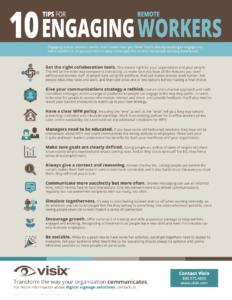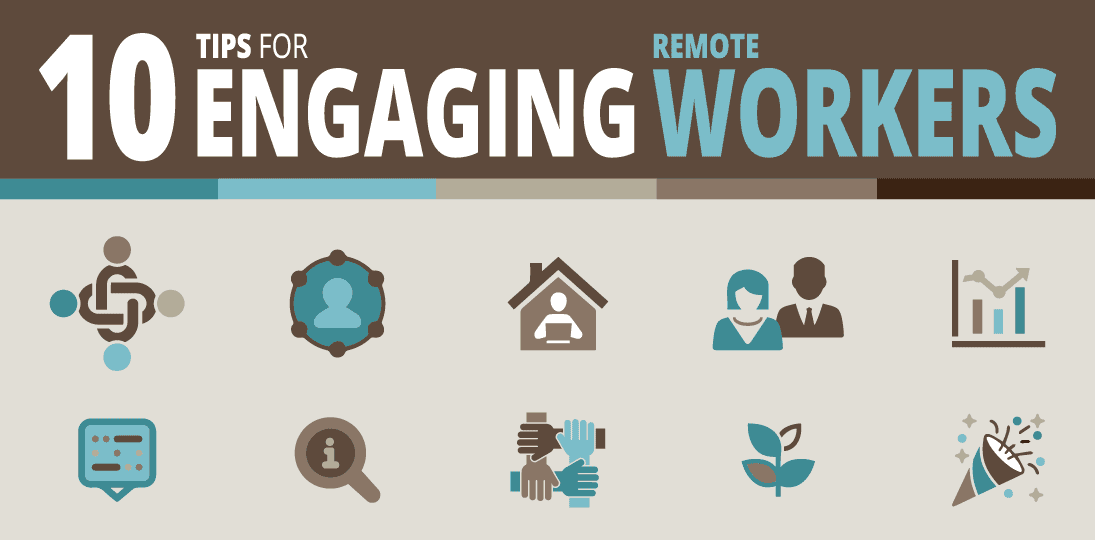Engaging remote workers can be much easier than you think. It’s not a completely new or foreign idea that you have to adopt. You’re already working to engage your entire workforce, so you just need to keep some specifics in mind for people working from home.
1. Get the right collaboration tools. This means right for your organization and your people. This will be the main way everyone is interacting, so make sure you have all the bells and whistles you need but not much extraneous stuff. If people hate using the platform, that just makes remote work harder. Consider asking people what they need and want and then test drive one or two options before making a final choice.
2. Give your communications strategy a rethink. Use an omni-channel approach and craft consistent messages across a range of platforms so people can engage in the way they prefer. It needs to be easy for people to access information, interact and share, and provide feedback. You’ll also need to revisit your success measures to match up to your new strategy.
3. Have a clear WFH policy. Including the “why” as well as the “what” will go a long way toward preventing confusion and misunderstandings. Work from existing policies for in-office workers (dress code, online availability, etc.) and build on any additional conditions for WFH.
4. Managers need to be educated. If you have some old-fashioned mindsets, they may not be enthusiastic about WFH and could communicate the wrong attitude to employees. Make sure everyone in your C-suite and team leaders understand the benefits for both your workforce and your organization.
5. Make sure goals are clearly defined. If a particular employee doesn’t normally have regular targets, maybe it’s time to make some for them. Giving people a list of goals lets them know exactly what’s expected and what’s coming next. And as they check items off the list, they feel a sense of accomplishment.
6. Always give a context and reasoning. Do this for workflows, instructions and goals, or at least be prepared to supply those if someone asks for them. Letting people see behind the curtain makes them feel more in control and more connected, and it also builds trust: because you trust them, they will trust you in turn.
7. Communicate more succinctly but more often. That doesn’t mean it needs to be staid or boring. Shorter messaging means the overall feel and voice takes on a more informal tone, which mimics face-to-face interactions. One key element here is to deliver communications regularly but not overwhelm recipients.
8. Simulate togetherness. It’s easy to start feeling isolated and cut off when working remotely, so do whatever you can to let people feel like they belong to something. Use video whenever you can to mimic the in-office experience, since actually seeing the people you’re talking with (even on screen) fosters a sense of connection.
9. Encourage growth. Most workers want to grow in their jobs, so offering some sort of training and skills acquisition package is a good way to keep them engaged and evolving. Recognizing achievements as they learn new skills and even micro-kudos can also motivate employees.
10. Be sociable. While it’s a good idea to help foster a feeling of belonging by having some fun, social activities need to appeal to everyone. As always, asking your audience for suggestions is the best way to increase involvement. These get-togethers should always be optional and online whenever possible so more people can participate, and everyone should be on camera.
With these tips, you can start engaging remote workers more effectively today. Click here to find out how digital signage can help.

